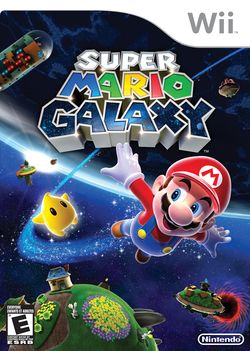 Super Mario Galaxy (Nintendo Wii)
Super Mario Galaxy (Nintendo Wii)
User Review
Product Information:
- Release Date (NA): November 12, 2007
- Release Date (EU): November 16, 2007
- Release Date (JP): November 1, 2007
- Publisher: Nintendo.
- Developer: Nintendo EAD Tokyo.
- Genres: Platformer.
Game Features:
Review Approach:
The year is 2007, one year after the Wii was released worldwide. The Wii was a radical shift from previous Nintendo systems, targeting a more casual audience instead of the "hardcore" market that the Xbox 360 and Playstation 3 targeted. And while this shift has a mixed reception today, it was this shift that led to the Wii becoming the best-selling console of the 7th generation of game consoles. But this shift in demographics did not change the fact that Nintendo was still going to release games for their established fanbase. So one year after the Wii's launch, Nintendo would release the next entry in the 3D Mario series.
When Super Mario Galaxy was released, it received critical acclaim and would go on to win many accolades. And unlike its predecessors, whose reception would change over time, Super Mario Galaxy is still considered to be one of the best Mario games to date. So with this in mind, does Super Mario Galaxy live up to its legacy? And how does it compare to its predecessors?
The plot of Super Mario Sunshine was a stupidly hilarious mess, so Super Mario Galaxy goes back to basics. The plot takes place during the Star Festival, which celebrates the arrival of a comet that appears once every 100 years. Princess Peach invites Mario to her castle to celebrate the festival together, but this is cut short by a sudden invasion. Bowser shows up alongside a battleship armada, with the plan being to lift the Princess' castle to outer space. Mario desperately tries to enter the castle, but a Magikoopa attacks him, sending Mario into parts unknown.
Mario eventually regains conciseness and finds himself stranded on a weird planet. He is greeted by a space bunny, who challenges him to a game of Hide-And-Seek. After Mario wins the little game, the rabbit transforms into a Luma, who introduces him to Rosalina, who makes her debut in this game.
Rosalina, aware of Bowser's attack, tells Mario that she can help him get to the castle with the help of her ship, the Comet Observatory. But for Mario to reach the castle, he needs to recover the returning Power Stars, which were stolen by Bowser. So now it's up to Mario to restore the Comet Observatory to full power, rescue the Princess, and put a stop to Bowser's plans once again.
This plot is essentially the standard Mario plot. Bowser kidnaps Peach, so Mario needs to save her. But this plot is told on such an epic scope, for it to become fresh again. Everything from the Star Festival, the added lore, the atmosphere, is executed masterfully. All of these details make for what I consider to be the best Mario plot in the main series.
Apart from the plot, the graphics and the sound department of the game are phenomenal. Super Mario Sunshine was already one of the best looking games of its generation, but Super Mario Galaxy looks even better. There is not a single thing that looks off in the graphics. The character models, the environments, the backgrounds, everything looks top notch. Super Mario Galaxy is, without a doubt, a visual masterpiece that showed what the Wii was capable of accomplishing. And it still looks incredible today.
The soundtrack composed by Mahito Yokota is also fantastic. To complement Super Mario Galaxy's setting of outer space, the soundtrack needed to be as grand and as epic as it could be to reflect this. So as a result of this, Super Mario Galaxy features the first orchestral soundtrack in the series. And the impact of the soundtrack becomes quite clear very quickly. Some of the standouts in the soundtrack include Good Egg Galaxy, Attack of the Airships, Battlerock Galaxy, the Final Battle, Purple Comet, Buoy Base Galaxy, and Gusty Garden Galaxy. All of these elements combined offer the best presentation I have ever seen in a Mario game, and I have absolutely no complaints here.
Considering how radically different the Wii's controllers are, how exactly did Nintendo EAD translate the controls of a 3D Mario game to the Wii? Super Mario Galaxy utilizes the Wii Remote alongside a Nunchuck, with a move set that more closely resembles Super Mario 64's move set. You control Mario with the Nunchuck's analog stick, and you jump with the A button. By pointing at the Wii's sensor bar, a cursor shows up, allowing you to interact with certain elements. The Nunchuck's Z button offers the same functionality as the N64's Z button and the GameCube's R button. The Z button makes Mario crouch as well as certain moves, such as the ground pound and the long jump, making its return from Super Mario 64. The main form of attack besides jumping into enemies is the spin, which can be done by shaking the Wii Remote. On the whole, Nintendo EAD did a great job translating the controls into the Wii Remote, and they feel surprisingly natural on the Wii Remote and Nunchuck. The spin is also a great addition to Mario's move set, allowing for a lot of shortcuts that reward you for your knowledge of the game's mechanics. The spin is also very satisfying to use in conjunction with other moves, such as the long jump, the backflip, and the ground pound.
Once again, Mario's move set is varied and fun enough to carry the entire experience, which once again makes for pretty underwhelming and situational power-ups. The power-ups in Super Mario Galaxy are more traditional, including the Fire Flower, the Ice Flower, the Starman, the Boo Mushroom, the Spring Mushroom, the Bee Mushroom, the Boo Mushroom, and the Red Star. The Fire Flower and the Starman are the same as before but in a 3D environment. The Ice Flower transforms Mario into Ice, allowing him to freeze water. The Bee Mushroom turns Mario into a Bee, which lets him fly for a short time. All of these power-ups are not that fun, but they are at least easy to use when you do end up needing them.
The Boo Mushroom and Spring Mushroom are a different story. The Boo Mushroom is a power-up that transforms Mario into a Boo, allowing him to go through specific walls. That's it. No attacks, limited movement, and the Boos still can damage you. But this power-up is nothing compared to the Spring Mushroom. The Spring Mushroom traps Mario inside a spring, which has some very awkward controls that can get you killed. And all of that just for a higher jump, which is not a good compromise.
The Red Star is by far the best power-up in the game, essentially acting as an improved version of the Wing Cap from Super Mario 64. But you only use it for one star in the game, so it's still pretty situational. And while the point that the core gameplay is enough to carry the experience still applies here, the power-ups do feel like wasted potential.
The camera controls suffer due to the Wii Remote and Nunchuck only having a single analog stick. So Super Mario Galaxy offers an improved version of the camera controls from Super Mario 64. The D-Pad serves the same function as the N64's C-Buttons, and they move the camera in set increments. And with the Nunchuck's C-Button, you can center the camera behind Mario. But for the most part, Super Mario Galaxy offers fixed camera angles, which work quite well on the levels. While this combination of free and fixed camera angles is an improvement over Super Mario 64, it still pales in comparison to Super Mario Sunshine's camera control.
But this weird mix of camera angles has an unfortunate effect on the swimming controls. The swimming controls carry over from Super Mario 64, which is a good thing. But they become quite awkward to use because the camera switches between the free and fixed angels, which leads to disorienting exploration. But that is, fortunately, the worst it gets when it comes to the game's controls, making for a pretty polished and intuitive control scheme, which is impressive considering the limitations of the Wii Remote and Nunchuck.
But when it comes to the construction of the levels, they share many similarities with Super Mario Sunshine. You must choose a specific star to obtain it, and the order in which you get them is always the same, although there are some secret stars you can collect. There are no Blue Coins and no 100 coin stars in the game. Considering how much of a mixed to negative experience the 100 coin stars were previously, their removal is ultimately a good thing. And while Blue Coins were the closest Super Mario Sunshine got to Super Mario 64's level of freedom, they do not work that well on this type of level progression.
The levels themselves offer the same level of exploration that Super Mario Sunshine offered, with the changes in the levels depending on the selected star also returning from Super Mario Sunshine. And due to the outer space setting, Super Mario Galaxy's levels offer a lot of level aesthetics. From a child's bedroom, a world that's a mix of both ice and lava, to a galaxy made out of junk, every galaxy offers a unique experience.
The missions offer more linear objectives than before, with the freedom of the levels limited to how you explore the levels. And since the levels change significantly depending on the star, the game becomes more linear than the previous installments. But since the linearity complements the game's structure pretty well, this is not an issue. And the replay value is higher than Super Mario Sunshine due to Super Mario Galaxy's more polished and concise structure. But Super Mario 64 still offers a more replayable experience. Regardless, Super Mario Galaxy is a blast to play, and getting all of the 120 stars is a fulfilling and satisfying experience.
However, not all of the stars are great. Two stars require you to blow up trash with Bomb-Ombs. And while this sounds fine, the strict time limit and the time that the Bomb-Ombs take to explode makes this task difficult. And while you do not lose a life when you fail, it becomes more and more frustrating the more times you fail. Thankfully, this is the worst it gets.
But the regular power stars are not the only collectibles. After a while, you will unlock the Prankster Comets. The Prankster Comets are alternative challenges that modify the level in significant ways. The challenges include beating the level under a time limit, beating the level without taking a single hit, racing a cosmic clone, and dealing with faster enemies. Ironically, these challenges are not that difficult. The time limits are very lenient, making for a pretty similar revisit. The Cosmic Clone's races only require some simple long jumps to win. The faster enemies also do not offer that much of a challenge. The exception to this is the no-hit challenges, which can get pretty intense. But the Prankster Comets are a suitable replacement to the Blue Coin side quest, and they work quite well with the game's structure. There are also some instances where you can find a Hungry Luma. The Hungry Lumas demand a specific number of Star Bits. After that, they will transform into a galaxy. The Hungry Lumas encourage you to collect as many Star Bits as you can and don't often ask you for a crazy amount of Star Bits. So you should be able to meet the quota just fine.
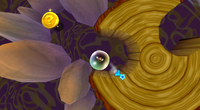
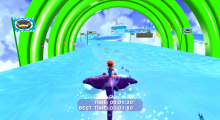
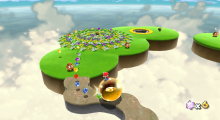
The three gimmicks can take some time to get used to, especially if you have technical difficulties.
But when you beat the final Bowser fight, you unlock the Purple Comets. These comets fill the planets with numerous Purple Coins. To complete these stars, you need to collect 100 Purple Coins. There are two types of Purple Comets: explorative and linear levels. The explorative levels offer the same experience as the 100 coin stars from previous games, with the exception that you have no more than 100 purple coins to collect. So if you die, repeating this process can be pretty tedious and boring. This type of Purple Comet is worse than the 100 coin stars since there is no room of error when it comes to collecting the purple coins. But the linear Purple Comets fare a lot better. On these levels, you have to collect the 100 purple coins under a time limit. (Or in the case of Battlerock and Dreadnought Galaxy, collect the coins while avoiding obstacles while Mario is on a moving platform) And these levels are an intense challenge. Luigi's Purple Coins stands out since you always have to keep moving as well as watching your steps. These Purple Comets are some of the best missions in Super Mario Galaxy.
So what happens when you get all 120 stars? Once you collect 120 stars and defeat the final Bowser fight once more, you unlock the ability to play as Luigi. Luigi jumps and runs faster than Mario, but has horrible traction making him slip for a bit. And you are tasked with collecting the 120 stars again, but with Luigi. Luigi is not as fun to play with compared to Mario, but the experience is different enough for it to be worth it. The only main difference found with Luigi's quest concerns the Cosmic Comets. Cosmic Luigi is more competent than Cosmic Mario, with Cosmic Luigi taking many shortcuts that make his races harder as a result. So what do you get after you collect 120 stars and defeat Bowser with Luigi? You unlock a secret final level for both characters that barely qualifies as a level. Just collect 100 purple coins on a linear path, with no obstacles or time limit at all. By beating the level, you get a message for the Wii Message Board congratulating you for completing the game 100%. While having to fight Bowser 4 times is pretty repetitive, the 100% experience is enjoyable and worth it if you enjoyed playing through Super Mario Galaxy.
The Boss Fights in Super Mario Galaxy are also a significant improvement over the previous game since all encounters with just three exceptions offer a unique boss to fight. While they are not necessarily the hardest boss fights in a Mario game, they are by far the most creative yet. Megaleg, Major Burrows, Bouldergeist, and Kingfin are just a few examples of the uniquely challenging boss fights in the game. And while you do fight three bosses, King Kaliente, Kamela, and Dino Piranha twice, the second encounter offers a twist to make for a more difficult fight. Bowser himself is probably at its best here as well. You need to avoid his attacks and wait for him to jump. While he is on the air, you need to lure him into some blue circles os he can crush them and land in lava. Afterward, carefully wait for him to run close to you and hit him with a spin. While this formula is simple, you don't have to deal with a disorientating camera like Super Mario 64, and the fight is more dynamic than Super Mario Sunshine's final boss. And the music that plays during these fights is phenomenal. On the whole, the boss fights in Super Mario Galaxy are the best in the 3D Mario series so far.
After the messy experience that was Super Mario Sunshine, Super Mario Galaxy is the breath of fresh air that the 3D Mario series needed at the time. It showed just how ambitious Nintendo EAD Tokyo was when they were creating this game. The vast number of improvements is just too large for me to count. And even if the game is more linear than Super Mario 64, Super Mario Galaxy offers a more complete, polished, and refined experience than Super Mario 64. So much so that it does not matter that the game's progression is quite linear. Super Mario Galaxy does what every sequel should do, take what worked from the previous games and refine it, while also fixing the problems the previous installments had. Super Mario Galaxy also goes above and beyond to deliver the best presentation out of the main Mario games to date. With almost every single aspect of the game handled masterfully, this is one of the rare games that comes as close as it possibly can to perfection. Yes, the game does have some issues. But the pros heavily outweigh the cons here, and I do not have that much to complain about here. Super Mario Galaxy is a true classic and one of the best games of the 7th generation. If you are a fan of 3D platformers, I cannot recommend this game enough.
Verdict
- Amazing presentation.
- Great level design.
- Intuitive controls.
- Lots of content.
- Great Boss Fights.
- Explorative Purple Comets.
- Power-ups are a wasted potential.
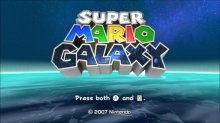

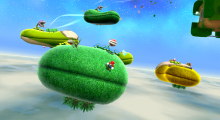
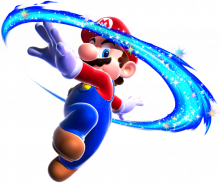
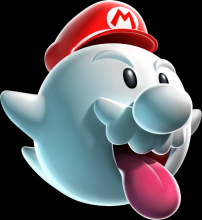
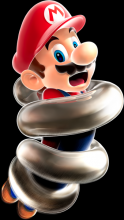
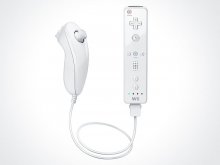
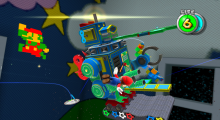

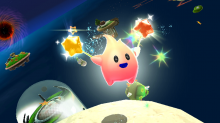
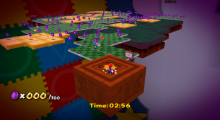
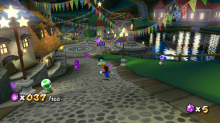
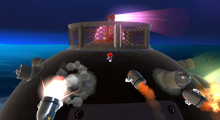
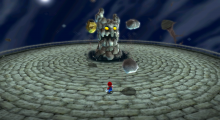
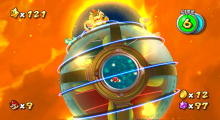
Reviews
MelGeek CYBER01 Magnetic Switch Rapid Trigger Gaming Keyboard
Today for review, we’ll be taking a look at the latest gaming keyboard from Meltek, the CYBER01 magnetic switch offering!
GEEKOM XT12 Pro Mini PC
Claimed to be the world's most cost-effecient i9 Mini PC, we check out the latest from Geekom.
Kospet Tank T3 Ultra
Tough enough to navigate and conquer the rugged wilderness.
Teenage Mutant Ninja Turtles Arcade: Wrath of the Mutants
The Turtles are back for their umpteenth game outing, but is this one worth it?
Alone in the Dark (2024)
Alone in the Dark is a Survival Horror game available for PlayStation 5, Xbox Series S/X and PC.
Site & Scene News
New Hot Discussed
DOOM has been ported to the retro game console in Persona 5 Royal
Review MelGeek CYBER01 Magnetic Switch Rapid Trigger Gaming Keyboard
Xbox release date for shooter 'Hypercharge: Unboxed' revealed
'Dragon Ball: Sparking! Zero' gets new trailer; revels new roster
PC and Xbox-exclusive 'Dungeons of Hinterberg' to launch in July
'Lost Records: Bloom & Rage' gets new trailer
'Promise Mascot Agency', the next game from 'Paradise Killer' developer, revealed
TheFloW releases new PPPwn kernel exploit for PS4, works on firmware 11.00
Delta emulator for iOS will support iPad devices in its next update
"Dino Crisis 2" for PC gets the "Classic Rebirth" mod treatment by developer Gemini
Wii U and 3DS online services shutting down today, but Pretendo is here to save the day
Nintendo Switch firmware update 18.0.1 has been released
The first retro emulator hits Apple's App Store, but you should probably avoid it
Delta emulator now available on the App Store for iOS
TheFloW releases new PPPwn kernel exploit for PS4, works on firmware 11.00
Nintendo takes down Gmod content from Steam's Workshop
A prototype of the original "The Legend of Zelda" for NES has been found and preserved
Anbernic reveals specs details of pocket-sized RG28XX retro handheld
Nintendo "Indie World" stream announced for April 17th, 2024
Nintendo Switch Online adds two more Nintendo 64 titles to its classic library
Wii U and 3DS online services shutting down today, but Pretendo is here to save the day
Nintendo takes down Gmod content from Steam's Workshop
The first retro emulator hits Apple's App Store, but you should probably avoid it
Delta emulator now available on the App Store for iOS
Nintendo Switch firmware update 18.0.1 has been released
TheFloW releases new PPPwn kernel exploit for PS4, works on firmware 11.00
DOOM has been ported to the retro game console in Persona 5 Royal
Nintendo Switch Online adds two more Nintendo 64 titles to its classic library
Nintendo "Indie World" stream announced for April 17th, 2024
The FCC has voted to restore net neutrality, reversing ruling from 2017